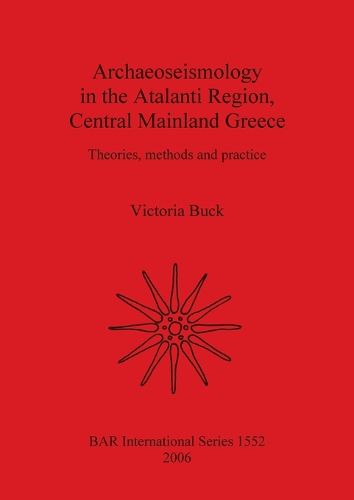Readings Newsletter
Become a Readings Member to make your shopping experience even easier.
Sign in or sign up for free!
You’re not far away from qualifying for FREE standard shipping within Australia
You’ve qualified for FREE standard shipping within Australia
The cart is loading…






This title is printed to order. This book may have been self-published. If so, we cannot guarantee the quality of the content. In the main most books will have gone through the editing process however some may not. We therefore suggest that you be aware of this before ordering this book. If in doubt check either the author or publisher’s details as we are unable to accept any returns unless they are faulty. Please contact us if you have any questions.
Identifying earthquakes as benchmarkers in archaeological stratigraphies is part of an old tradition of site and excavation interpretation dating back to the early archaeologists of the 19th century. In the past two decades a surge of research in seismology and seismic hazard led to increased interest from geologists for the potential of archaeologically derived seismic information to seismic research. The subject of this work is, therefore, a study of archaeological remains as a proxy data source for earthquake geology and palaeoseismology. This was carried out through an examination of the previous work (both archaeological and geological). Based on the findings of the methodological and theoretical discussion an alternative to the universal identification criteria approach is proposed by the author. This advocates a wholly interdisciplinary approach and is further explored with the application of a Geographical Information System (GIS) as a means to full integration of the disparate data sets, i.e. numerical and textual. The proposed method is tested by means of its application to two representative case studies; the inland (settlement) site of Kyparissi and the coastal site of Alai in Atalanti, central mainland Greece. In the process of testing the working hypothesis a regional database of information is constructed, which although an integral part of the research carried out for this work, can stand alone as a reference database.
$9.00 standard shipping within Australia
FREE standard shipping within Australia for orders over $100.00
Express & International shipping calculated at checkout
This title is printed to order. This book may have been self-published. If so, we cannot guarantee the quality of the content. In the main most books will have gone through the editing process however some may not. We therefore suggest that you be aware of this before ordering this book. If in doubt check either the author or publisher’s details as we are unable to accept any returns unless they are faulty. Please contact us if you have any questions.
Identifying earthquakes as benchmarkers in archaeological stratigraphies is part of an old tradition of site and excavation interpretation dating back to the early archaeologists of the 19th century. In the past two decades a surge of research in seismology and seismic hazard led to increased interest from geologists for the potential of archaeologically derived seismic information to seismic research. The subject of this work is, therefore, a study of archaeological remains as a proxy data source for earthquake geology and palaeoseismology. This was carried out through an examination of the previous work (both archaeological and geological). Based on the findings of the methodological and theoretical discussion an alternative to the universal identification criteria approach is proposed by the author. This advocates a wholly interdisciplinary approach and is further explored with the application of a Geographical Information System (GIS) as a means to full integration of the disparate data sets, i.e. numerical and textual. The proposed method is tested by means of its application to two representative case studies; the inland (settlement) site of Kyparissi and the coastal site of Alai in Atalanti, central mainland Greece. In the process of testing the working hypothesis a regional database of information is constructed, which although an integral part of the research carried out for this work, can stand alone as a reference database.